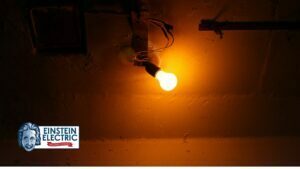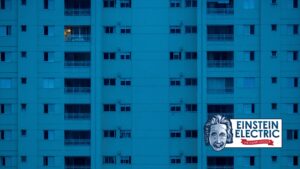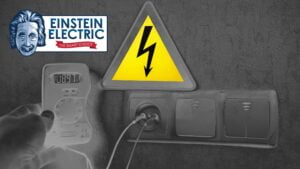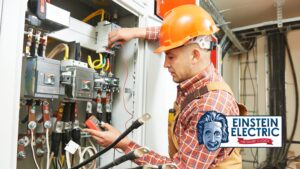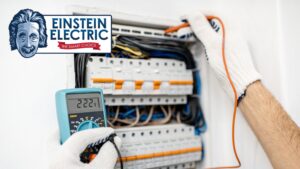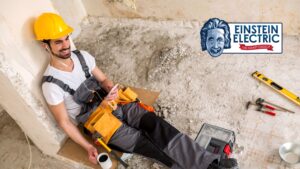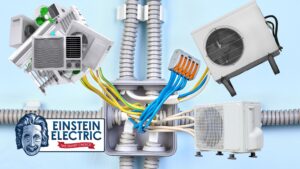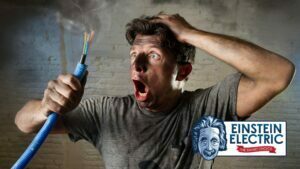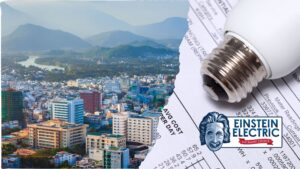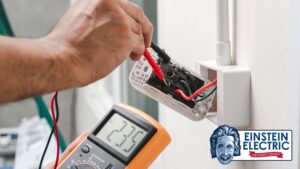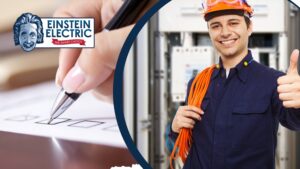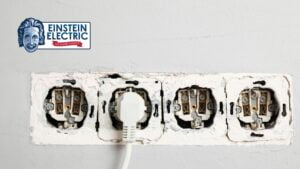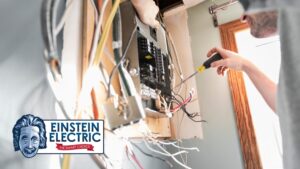When it comes to cooling systems, there’s a cool factor that goes beyond just providing comfort. Electrical maintenance plays a crucial role in maximizing the lifespan of cooling systems, ensuring optimal performance, energy efficiency, and cost savings. In this blog post, we’ll explore the importance of electrical maintenance in cooling systems and discuss key practices to keep your system running smoothly.
Regular Inspections and Testing
Regular inspections and testing are the foundation of effective electrical maintenance for cooling systems. These routine checks allow you to proactively identify and address potential electrical issues before they develop into significant problems.
During inspections, it’s important to thoroughly examine electrical connections, wiring, and components. Loose connections, frayed wires, or signs of wear and tear can be indicative of impending electrical failures. By detecting these issues early on, you can take corrective measures to prevent system malfunctions, equipment damage, or safety hazards.
Additionally, testing electrical controls, sensors, and safety devices is crucial. These components play a critical role in the proper functioning of the cooling system. Regular testing ensures that they are working as intended and can quickly identify any malfunctions or inaccuracies. By promptly addressing these issues, you can avoid unexpected breakdowns and potentially costly repairs or replacements.
Overall, regular inspections and testing form an essential part of electrical maintenance. By conducting these checks on a routine basis, you can mitigate risks, extend the lifespan of your cooling system, and maintain optimal performance and energy efficiency. Remember, prevention is always better than cure when it comes to electrical maintenance.
Cleaning and Preventive Maintenance
Cleaning and preventive maintenance are key factors in maximizing the lifespan and efficiency of cooling systems. Over time, dirt, dust, and debris can accumulate on various components, such as fans, coils, and filters. Regular cleaning of these components is essential to ensure optimal airflow and heat transfer, which directly affects the system’s performance.
Clogged filters can restrict airflow, causing the system to work harder to achieve the desired cooling effect. This strain not only reduces the system’s cooling capacity but also leads to increased energy consumption. By implementing a preventive maintenance schedule that includes regular cleaning and inspection tasks, you can prevent these issues and keep your cooling system in top shape.
Cleaning should be performed according to the manufacturer’s recommendations and guidelines. This may involve removing and cleaning filters, clearing debris from fan blades, and cleaning coils to remove dirt and dust buildup. Additionally, it’s important to inspect other system components during the cleaning process to identify any signs of damage or wear that may require attention.
By prioritizing cleaning and preventive maintenance, you can ensure optimal airflow, heat transfer efficiency, and energy savings. A well-maintained cooling system not only extends its lifespan but also provides a comfortable and healthy indoor environment for occupants.
Electrical Component Lubrication
Cleaning and preventive maintenance are key factors in maximizing the lifespan and efficiency of cooling systems. Over time, dirt, dust, and debris can accumulate on various components, such as fans, coils, and filters. Regular cleaning of these components is essential to ensure optimal airflow and heat transfer, which directly affects the system’s performance.
Clogged filters can restrict airflow, causing the system to work harder to achieve the desired cooling effect. This strain not only reduces the system’s cooling capacity but also leads to increased energy consumption. By implementing a preventive maintenance schedule that includes regular cleaning and inspection tasks, you can prevent these issues and keep your cooling system in top shape.
Cleaning should be performed according to the manufacturer’s recommendations and guidelines. This may involve removing and cleaning filters, clearing debris from fan blades, and cleaning coils to remove dirt and dust buildup. Additionally, it’s important to inspect other system components during the cleaning process to identify any signs of damage or wear that may require attention.
By prioritizing cleaning and preventive maintenance, you can ensure optimal airflow, heat transfer efficiency, and energy savings. A well-maintained cooling system not only extends its lifespan but also provides a comfortable and healthy indoor environment for occupants.
Calibration and Adjustment
Calibration and adjustment are vital aspects of electrical maintenance for cooling systems, particularly when it comes to temperature control. The sensors, thermostats, and control mechanisms in a cooling system can gradually drift from their optimal settings due to various factors like wear and tear, environmental changes, or aging components.
Regular calibration ensures that these components are accurately measuring and maintaining the desired temperature levels. By verifying and adjusting their settings, you can prevent temperature inconsistencies that may lead to discomfort for occupants or inefficient cooling operation.
Precise calibration and adjustment have several benefits. Firstly, they optimize the overall performance of the cooling system, allowing it to operate at its peak efficiency. This can result in energy savings and reduced operating costs, as the system is running in the most efficient manner possible.
Secondly, calibrated sensors and thermostats provide a comfortable and consistent cooling environment. By maintaining accurate temperature control, occupants can enjoy a stable and pleasant indoor climate, free from temperature fluctuations.
Lastly, regular calibration and adjustment contribute to the overall lifespan of the cooling system. By ensuring that the components are operating within their specified parameters, you reduce the risk of excessive strain, equipment failure, or premature wear and tear.
Regular calibration and adjustment of sensors, thermostats, and control mechanisms in cooling systems are essential for optimal performance, energy efficiency, and occupant comfort. By incorporating these practices into your electrical maintenance routine, you can maximize the lifespan of your cooling system while providing a consistently cool environment.
Electrical Safety Measures
Electrical safety measures are of paramount importance when it comes to cooling system maintenance. Ensuring a safe electrical environment not only protects the system but also safeguards the well-being of occupants and property.
One crucial safety measure is to ensure that all electrical connections are properly grounded. Grounding helps prevent electrical shocks, mitigates the risk of electrical fires, and provides a path for excess electrical energy to dissipate harmlessly. It’s important to regularly inspect and verify that the grounding connections are intact and in compliance with electrical codes and standards.
Another essential safety measure is to ensure the proper functioning of safety devices such as circuit breakers, fuses, and disconnect switches. These devices protect the system from overloads, short circuits, and other electrical faults. Regularly check that these safety devices are operational and capable of interrupting electrical currents when necessary.
Regular inspections should also include looking for signs of electrical damage, overheating, or electrical arcing. These issues can indicate underlying electrical problems that need immediate attention. If any irregularities are detected, it’s crucial to consult a qualified electrician who can assess and rectify the issues promptly and professionally.
By implementing these electrical safety measures, you minimize the risk of electrical hazards, such as electric shock or fire, and ensure the reliable and safe operation of your cooling system. Prioritizing electrical safety not only protects your investment but also contributes to the well-being and peace of mind of everyone in the vicinity.
Upgrading and Modernizing
Upgrading and modernizing your cooling system can bring numerous benefits, especially if your current system is outdated or inefficient. With advancements in technology, newer cooling system models offer enhanced energy efficiency, improved performance, and advanced features that can optimize your cooling experience.
One of the primary advantages of upgrading is the potential for increased energy efficiency. Newer cooling systems are designed to operate with higher efficiency standards, incorporating advanced electrical controls, smart thermostats, and energy-saving features. These features allow for precise temperature control, optimized cooling cycles, and better utilization of energy, resulting in significant energy savings and lower operating costs over time.
In addition to energy efficiency, upgrading your cooling system can also improve overall performance. Newer models often boast improved cooling capacity, faster response times, and quieter operation. This can provide a more comfortable and consistent cooling environment for occupants.
Furthermore, upgrading your cooling system can future-proof your setup. As environmental regulations and energy efficiency standards continue to evolve, newer systems are designed to meet or exceed these requirements. By investing in a modern cooling system, you ensure compliance with current and future industry standards, potentially saving you from costly retrofits or system replacements down the line.
When considering an upgrade or modernization, it’s important to consult with professionals who can assess your specific needs, evaluate the available options, and recommend the most suitable system for your requirements and budget.
In conclusion, upgrading and modernizing your cooling system can lead to improved energy efficiency, enhanced performance, and future-proofing. By taking advantage of the latest technologies and features, you can enjoy significant energy savings, a more comfortable environment, and a system that meets or exceeds current industry standards.
Professional Electrical Maintenance
Professional electrical maintenance is essential for the optimal functioning and longevity of your cooling system. While some routine maintenance tasks can be performed by building owners or facility managers, complex procedures require the expertise of qualified electrical maintenance specialists.
These professionals possess the necessary knowledge and training to conduct detailed inspections and assessments of your cooling system. They can identify potential electrical issues, diagnose problems accurately, and recommend appropriate solutions. With their experience, they can efficiently troubleshoot complex electrical systems, ensuring that all components are functioning as intended.
In addition to their expertise, electrical maintenance specialists have access to specialized tools and equipment. These tools enable them to perform tasks with precision, diagnose intricate electrical problems, and carry out repairs and replacements effectively. By entrusting the maintenance of your cooling system to professionals, you benefit from their specialized resources and ensure that the work is performed to the highest standards.
Moreover, professional electrical maintenance helps maximize the lifespan and performance of your cooling system. Regular inspections, maintenance, and repairs conducted by qualified technicians can address issues before they escalate into major problems. This proactive approach not only prevents unexpected breakdowns but also improves the overall efficiency and functionality of your cooling system, leading to cost savings in the long run.
Involving professional electrical maintenance specialists in the upkeep of your cooling system is crucial. Their expertise, tools, and knowledge ensure that your system receives the necessary attention and care to maximize its lifespan, performance, and energy efficiency. By relying on professionals, you can have peace of mind knowing that your cooling system is in capable hands.
In conclusion, electrical maintenance plays a critical role in maximizing the lifespan of cooling systems. Regular inspections, cleaning, lubrication, calibration, and safety measures are all vital to keep your system running smoothly. By implementing these electrical maintenance practices and involving professionals when needed, you can enjoy optimal performance, energy efficiency, and cost savings while ensuring a cool and comfortable environment for years to come.


